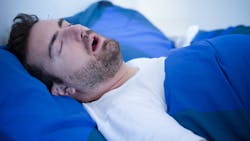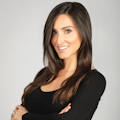Bringing your dental sleep practice to the next level: It takes a village
For years, dental sleep medicine has been one of the most sought-after topics for lectures and conferences. It’s not surprising, since more than 25 million people in the US have obstructive sleep apnea (OSA), and most of them aren’t being treated at all. The potential to grow your dental sleep practice is tremendous, but you can’t do it on your own. It takes a village.
Getting your team involved isn’t unique to sleep medicine, but who should be on that team might surprise you. To bring your dental sleep practice to the next level, you need to have the support of a sleep champion (who may or may not be a dental professional), referring physicians, patients, and their loved ones.
The sleep champion
Your sleep champion should not be your overburdened hygienist who suddenly starts giving out STOP-Bang questionnaires.1 The position of sleep champion has clear job responsibilities, appropriate time factored into their schedule, and motivating factors to succeed in their role.
We love hygienists or dental assistants for this role, but it can be anyone in the practice who is passionate and educated in sleep medicine. Some incredibly successful practices hire sleep medicine professionals for this role. Sleep technologists (RPSGT, CCSH), respiratory therapists (RRT), nurses (CRN, NP), social workers (LCSW), and even some fitness professionals may be trained to educate and coach patients through the process.
Read more about sleep medicine …
Why aren’t you sleep screening?
Can a nightguard kill a sleep apnea patient?
Want to be successful at sleep dentistry? Start here
Answered: How to handle CPAP recalls
Technology and other resources
Let’s not forget about the technology that we are all so dependent on. Virtual coaches can be an incredible way to support your team and your patients. There are online educational and coaching programs such as Dental Sleep Coach by Sleep Better NYC, as well as sleep screening apps on the market. Just beware of the inaccuracy of their “tracking” when there isn’t a diagnostic component and/or credentialed professional on the other end.
If you don’t think you have the finances to hire a new team member or outsource to a sleep coaching program, consider the value of increased screening and case acceptance. Consider the marketing value it brings to the practice: having a sleep coach is a great way to set yourself apart from others, especially when marketing to new patients and referring physicians. Access this free guide on board certification in clinical sleep health so you can become a credentialed sleep coach.2
Referring physicians
Most diagnosed sleep referrals come from board-certified sleep physicians, but a significant number of psychiatry patients experience insomnia and OSA as well. In fact, almost 40% of these patients have OSA, referred to as COMISA (comorbid insomnia and sleep apnea).3 We know that gastroesophageal reflux disease (GERD) and nocturia are primary symptoms of OSA; these patients are working with local gastroenterologists and urologists.
Is there a women’s health center close to your practice? Postmenopausal women have one of the highest incidences of sleep apnea: 47%–67%. Further, pregnant women, especially in the third trimester, often develop snoring and signs of sleep apnea.
Getting patients involved in their treatment
While this “dental sleep village” gets bigger and bigger, don’t underestimate patients and their own support systems. We know that the bed partner is often the primary motivation for a patient to seek help. Their partner complains about loud snoring, sleepless nights, mood swings, and the fear of cardiovascular disease. Remind your patient of their loved ones when you’re talking to them about sleep treatment. In fact, whenever possible, include their loved ones when you are discussing sleep treatment.
The Epworth Sleepiness Scale is a clinically validated questionnaire used to determine “excessive sleepiness.” This scale is used to screen patients for OSA, and it’s often submitted to insurance companies to prove necessity of treatment. The problem is that patients are notoriously bad about filling out the questionnaire on their own. Their partner, child, or caretaker can be a big help in getting the form completed to provide a more accurate baseline for analysis.
If you’re serious about sleep treatment in your practice, you can’t go it alone. Strategize the best way to use the resources and technology available to build your successful sleep village.
Editor’s note: This article first appeared in Through the Loupes newsletter, a publication of the Endeavor Business Media Dental Group. Read more articles and subscribe to Through the Loupes.
References
- Pacheco D. Reviewed by Singh A. STOP-Bang score for obstructive sleep apnea. Sleep Foundation. Updated June 29, 2022. https://www.sleepfoundation.org/sleep-apnea/stop-bang-score
- DeNike T. Dental professional to CCSH: pathways. Sleep Better NYC. https://www.canva.com/design/DAFBnqu98to/B5ON4hkwte_DJr12YaMoYw/view
- Prerau M. Characterizing mortality and CVD for co-morbid insomnia and sleep apnea (COMISA) in the Sleep Heart Health Study. National Sleep Research Resource. June 6, 2022. https://sleepdata.org/blog/2022/06/mortality-and-cvd-in-co-morbid-insomnia-and-sleep-apnea-comisa
About the Author
Teresa Power DeNike, BS, CCSH
Teresa Power DeNike, BS, CCSH, is the founder of Sleep Better NYC. She has a passion for helping people sleep better through education, sleep coaching, and care coordination. DeNike is board-certified in clinical sleep health with expertise in sleep apnea screening, testing, and treatment, as well as general sleep hygiene and mindset practices. Contact her at [email protected].
Updated January 24, 2023



